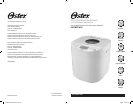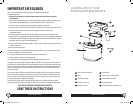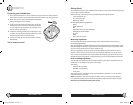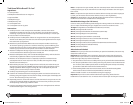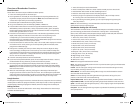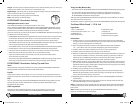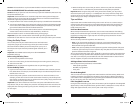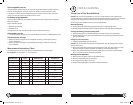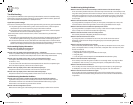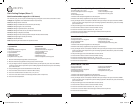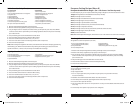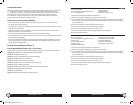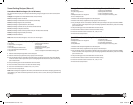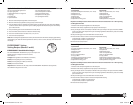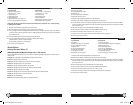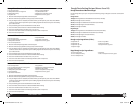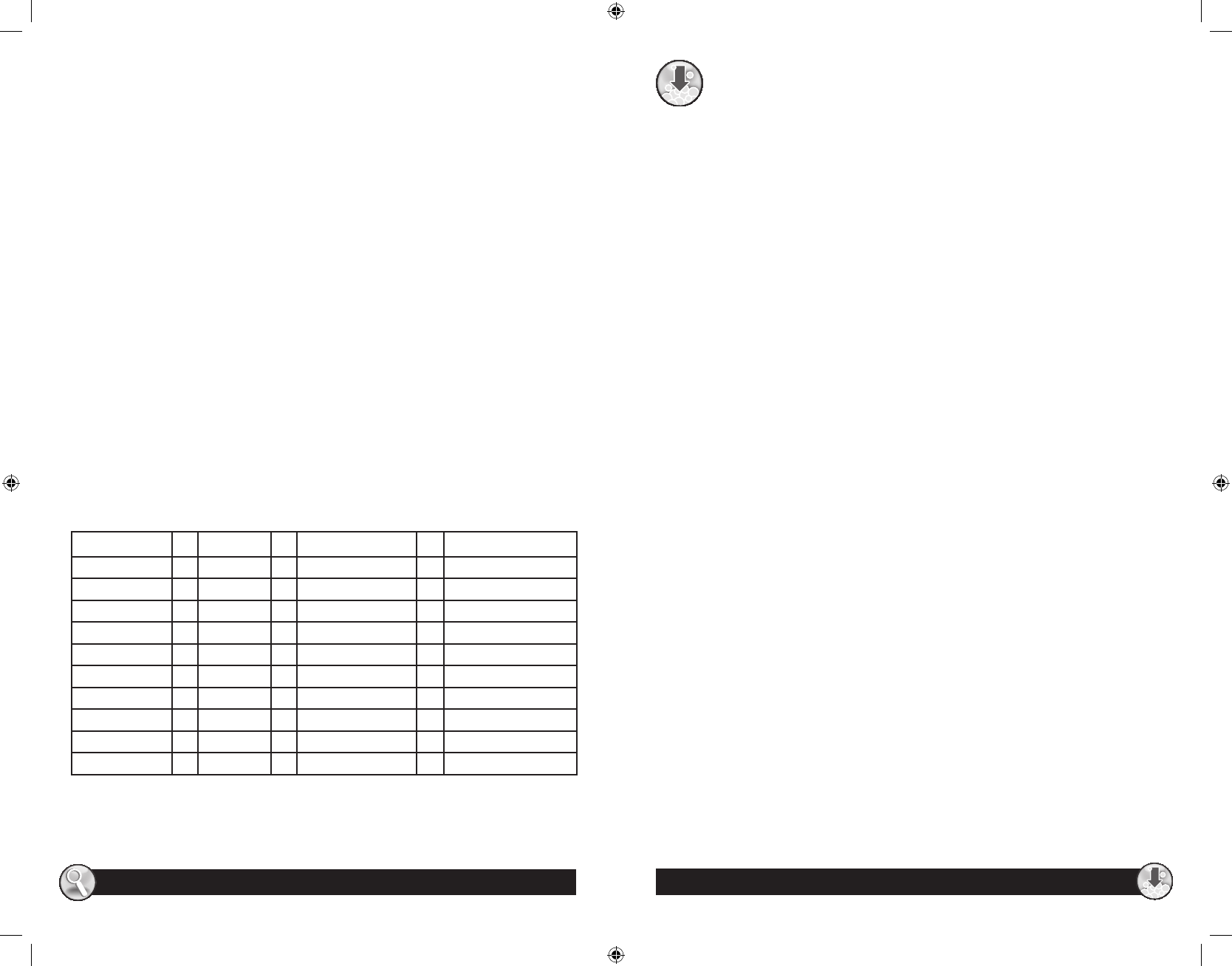
www.oster.com
14
www.oster.com
15
If the doughball is too dry
If the doughball appears aky, or you hear your breadmaker begin to make “knocking”
sounds, the doughbaII is too dry. To correct this problem, simply sprinkle in water,
a teaspoon at a time, until the doughball appears smooth, round and dry, and circles
nicely in the pan. Be careful not to add too much water.
For Baking at High Altitudes
If you live above 3000 feet, you probably already know how to adjust other recipes like
cakes and muns.
Higher altitudes tend to:
• Make dough rise faster
• Make our drier
To compensate for high altitude baking, we recommend the following:
If the dough is too dry
• Increase the amount of water to the recipe, sometimes as much as 2–4 tablespoons per cup.
If the bread rises too high
• Reduce the amount of yeast. For each teaspoon of yeast, try reducing the yeast by
1/8 to 1/4 teaspoon.
• Reduce the amount of sugar. For each tablespoon of sugar, reduce the amount by
1 to 2 teaspoons.
Measurement Equivalency Chart
The following chart will help you convert measurements used in the recipes.
For example: 1/2 tablespoon = 1–1/2 teaspoons
Fluid Ounce(s) Cup(s) Tablespoon(s) Teaspoon(s)
8 = 1 = 16 = 48
7 = 7/8 = 14 = 42
6 = 3/4 = 12 = 36
5 = 5/8 = 10 = 30
4 = 1/2 = 8 = 24
3 = 3/8 = 6 = 18
2 = 1/4 = 4 = 12
1 = 1/8 = 2 = 6
= = 1 = 3
1/2 = 1 1/2
CARE & CLEANING
Taking Care of Your Bread Machine
Caution: Do not put the breadmaker in water or in a dishwasher, Do not use benzene,
scrubbing brushes, or chemical cleaners as these will damage the machine. Do not immerse
in liquids. Press Stop Button and remove cord plug from wall outlet. Allow to cool.
Use only a mild, non-abrasive cleaner to clean the breadmaker.
General cleaning
1 Remove all bread crumbs by wiping them away with a slightly damp cloth.
2 DO NOT bend the heating element which is located on the inside of the breadmaker.
Cleaning the baking pan and kneading blade
1 Wipe the baking pan and kneading blade with a damp cloth and dry completely.
2 DO NOT wash the pan or parts in the dishwasher. This will damage the nish of the pan
and the other parts.
Caring for your bread maker
1 Keep your breadmaker clean at all times.
Caution: Do not use metal utensils with the breadmaker. This will damage the non-stick
pan and other parts.
2 Don’t worry if the color of the bread pan changes over time. The color change is a result
of steam and other moisture and does not aect the machine’s performance.
3 If you have trouble removing the kneading blade, place warm water in the bread pan
for 10–15 minutes and this will loosen the blade.
Storing your breadmaker
1 Make sure the machine is clean and dry before storing.
2 Store the breadmaker with the lid closed.
3 Do not place heavy objects on the lid.
4 Remove the kneading blade and place inside the bread pan.
CKSTBRTW20-BM-IB-RevC.indd 14-15 6/30/09 5:20:29 PM



